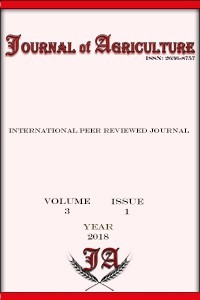
Journal of Agriculture
Yazarlar: ["Savaş UZUNOĞLU", "Emrah KUŞ"]
Konular:-
DOI:10.46876/ja.1202911
Anahtar Kelimeler:Biomass,Biofuel,Agricultural residues,Thermogravimetry,Differential Thermogravimetry
Özet: In this study, the combustion properties of pellets produced from quinoa (C3 plant) and amaranth (C4 plant) harvest residues were evaluated by Thermogravimetric Analysis (TGA) and Differential Thermogravimetry (DTG) methods. Pelletizing was carried out at 25% moisture content and at a material temperature of 70 °C. 7.5% molasses was used as the adhesive. The pellets were heated from 25 °C to 1000 °C in a thermal analyzer at a tracking rate of 10 °C min-1 and in N2 gas environment. The mass loss and mass loss rate occurring in this temperature range were recorded simultaneously and expressed in thermograms. Combustion stages are observed as a peak in the DTG curve and these peaks represent the mass losses in the combustion stages. According to the analysis results, the highest mass loss rate in the evaporation zone of water in the quinoa plant was 2.12% at 96.65 °C, and in the amaranth plant at 2.34% at 101.7 °C. However, in the next step, the mass loss rate decreased in both pellets. At this stage of the analysis, the water in the pellets completely evaporated and the mass loss was 12.43% in quinoa and 13.38% in amaranth, according to the initial mass. With the increase of volatile matter output, the mass loss rate increased again, and the highest mass loss rates were realized as 6.42% and 4.96%, respectively, at 320 °C for quinoa and 315 °C for amaranth. The rate-determining stage in the combustion kinetics of coal and biomass is the semi-coke combustion stage. At this stage, the lowest mass loss (0.89%) occurred in both pellet samples. TGA and DTG results showed that there were no significant differences between the combustion stages of quinoa and amaranth pellets, and their combustion behaviors were generally close to each other.